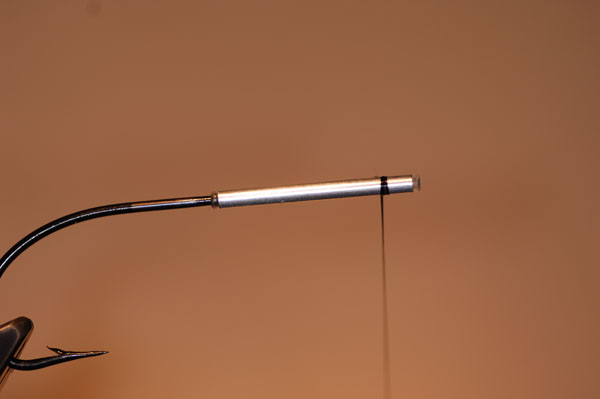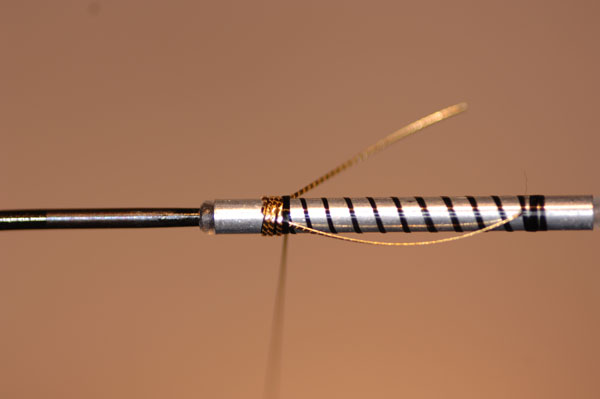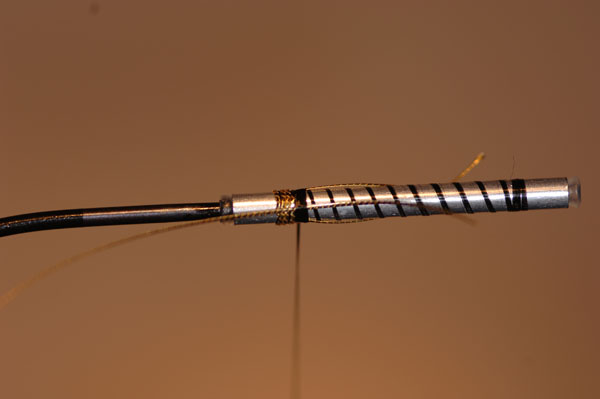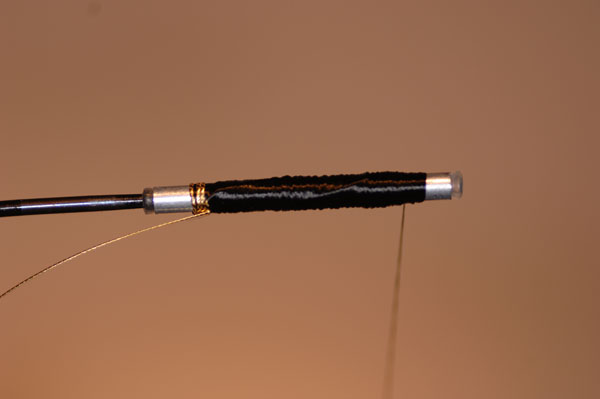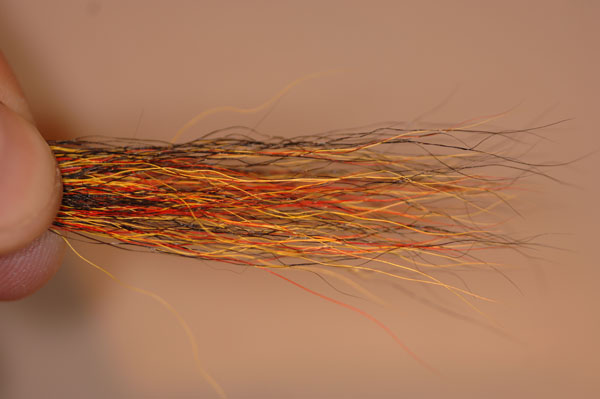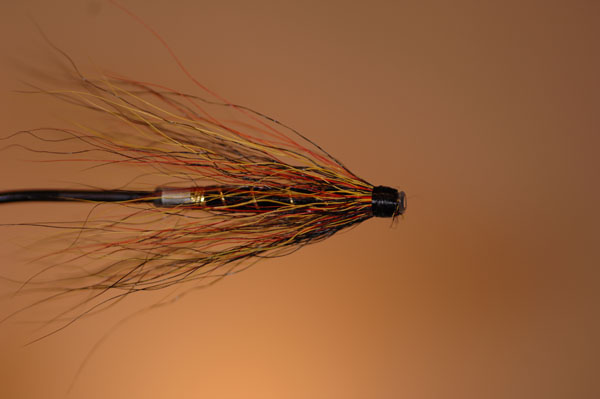
Willie Gunn Tube
This is a very successful pattern for salmon in many rivers throughout the British Isles and Europe.
The dressing is as follows:
- Tube: From 1/2″ to 2″ either aluminium or copper.
- Silk: Black
- Tag: Gold oval tinsel (small in this example)
- Rib: As Tag
- Body: Black silk floss
- Wing: Mixed black, yellow, orange, and red bucktail
- Head: Black
Firstly attach your hook to the tube fly holder of your choice and attach the tying silk with a jam knot.
Now take the silk down in open turns to the butt end of the fly and attach a length of the oval tinsel to form the tag.
The first turn of the tag should be on the bare tube and then in touching turns forward.
You only need some three to four turns to form the tag.
Remove the waste from the tag but leave a shanks length of the tinsel to tie down under the floss body. This will ensure that the tag stays in place and prevents the floss body slipping down off the tube shank.
Tie in a length of the same tinsel to for the rib.
Wind on an even body of black floss silk and tie off at the head of the tube.
In open turn wind on the ribbing material. I always go in the opposite way to the winding of the floss silk for added strength to the fly.
There is no reason not to varnish the body which again will make it more durable once ribbed but does not tie any further if you do until it is well dried by at least 24 hours.
The wing is mixed in the fingers prior to tying in. The colours are placed in equal parts but some dominate more than others so you can adjust the amounts of the colours to get the right combination that you desire.
This can change the whole fly for use in different water conditions. By this I mean I would use a brighter fly(more yellow and Orange) in a flood or coloured water and a darker fly (more black and red) towards the end of the season.
It is your fly but tries different combinations in different water conditions.
Tie on the hair wing around the entire shank of the fly and ensure that it is evenly spaced. Whatever you do not be tempted to tie in too much material.
The wing has to give the impression of life so has to move and it cannot do that if it is hampered by other materials.
Remove the waste and whip finish and varnish the head.


